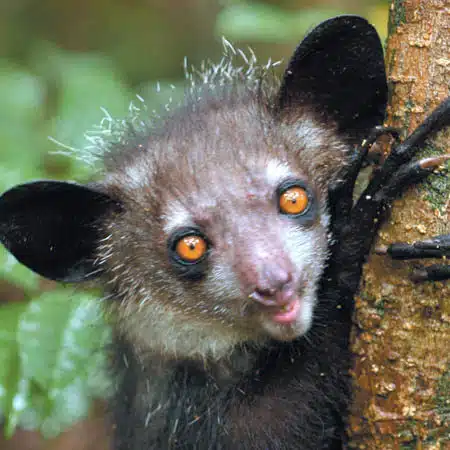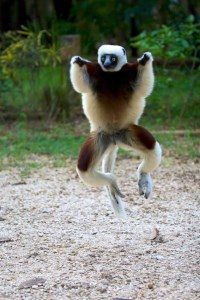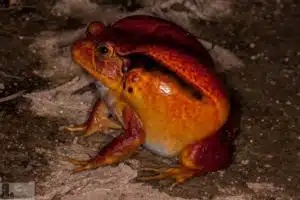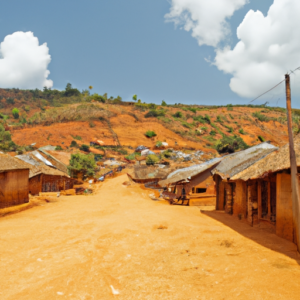Experience Madagascar’s Biodiversity Up Close
Sifakas, Indri-Indri, Catta, Aye-Aye, Microcebus, and many more
In ancient Rome, “Lemur” referred to a nocturnal spirit. Today, however, “Lemur” is the common term for the primates living in Madagascar, known zoologically as wet-nosed or prosimians. Lemurs were once found on all continents but were evolutionarily displaced by other higher primates. It is often believed that the species could not adapt to changing environmental and living conditions. The advancement of large lemur species into some urban areas in Madagascar is a testament to their adaptability.
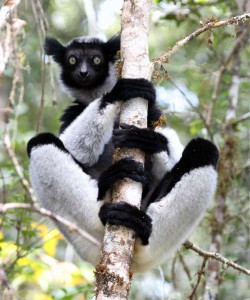
Madagascar’s Biodiversity
Madagascar’s biodiversity is evident in its unique lemurs, which have adapted to new and different habitats when left undisturbed!
In most cases, however, lemurs maintain a dignified distance from humans and only allow for a limited approach. Stubborn as lemurs are, they may accept a certain level of closeness. Cameras rarely take into account. Getting a snapshot of a lemur can thus be considered a stroke of luck.
, stand out for their beautiful, dense fur, their skill in moving through the branches – and their impressive way of moving on. On flat ground: The Sifaka moves there in acrobatic forward and sideways jumps. Upright, standing on their hind legs, the Sifakas seem to dance rather than walk, earning them the nickname “dancing Lemur”. Among the most impressive of all lemurs are undoubtedly the last representatives of the family of giant lemurs, the legendary and particularly large “Indri-Indris”. These gentle animals, with a body weight of up to 14 kilograms, no tail, and black and white fur, are more reminiscent of small bears at first glance. They usually appear in groups and communicate over many kilometers through their famous, penetrating, melodic calls. ideal for nature lovers in Madagascar, offering a combination of hiking and wildlife observation. With a bit of luck, visitors can experience the island’s unique wildlife up close and enjoy unforgettable moments in nature. Especially in Andasibe National Park and Zahamena National Park, travelers have the opportunity to observe lemurs in their natural habitat. It is advisable to have a certain level of mobility in order to follow the animals through the often challenging terrain. In Andasibe National Park and Zahamena National Park, visitors can discover the last populations of the Babakoto lemur species, which was once widespread as far as Antananarivo. In Andasibe National Park, it is even possible to get very close to the lemurs, as they sometimes venture close to the hotel grounds and can be observed from there. An unforgettable experience for nature lovers and animal enthusiasts! Individual trips to Andasibe, where experienced guides can cater to the personal preferences of travelers.

